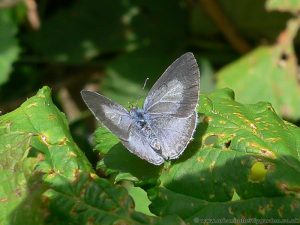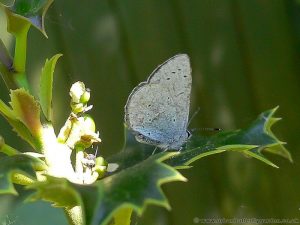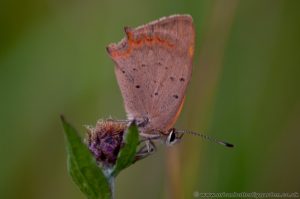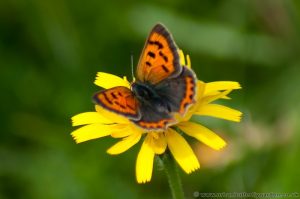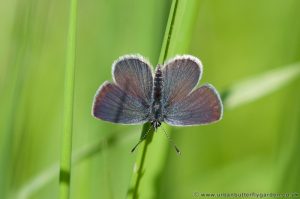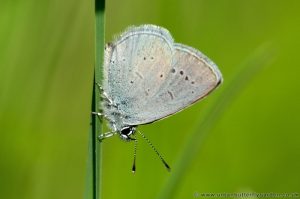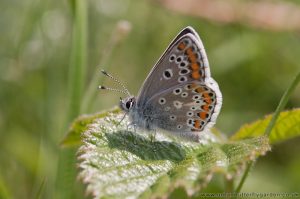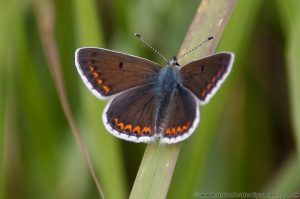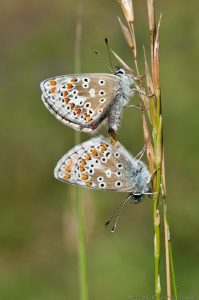about
The Holly Blue (Celastrina argiolus) is small blue butterfly that may be seen from early spring, often in and around habitat where established Ivy (Hedra helix) and Holly (Ilex aquifolium) are growing in a sunny sheltered position.
where
The Holly blue may be found in this type of habitat in hedgerows, woodland, urban gardens and parks across Southern England, Wales and Southern Ireland.
Holly Blue butterflies lay two broods of eggs the first in Holly (Ilex aquifolium) April – May, and the second brood on Common Ivy (Hedera helix) August – September.
Upper wings are violet blue and are only occasionally seen, while the butterfly is nectaring or resting, although after periods of cloud cover or rain, they may be seen sunbathing for brief periods, with wings open taking full advantage first available warm sun light.
Information
- Wingspan– approx 30mm.
- Adult Nectar Plants :- Holly (Ilex aquifolium), Ivy (Hedera helix), Gorses (Ulex spp.), Snowberry bush (Symphoricarpos spp), Bramble Flowers (Rubus spp.), Hemp Agrimony (Eupatorium cannabinum), Common Ragwort (Senecio jacobaea)
- Photographed– above 23rd May 2010, Left 5th August
- Location – My Garden.

